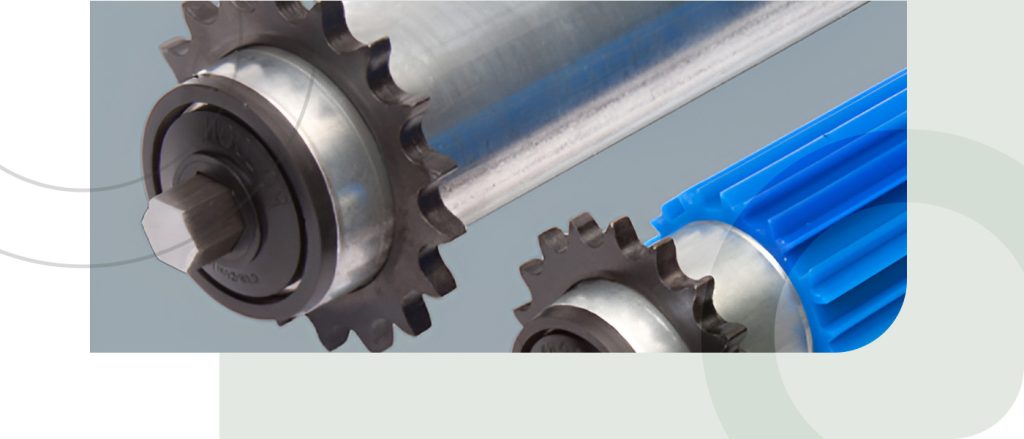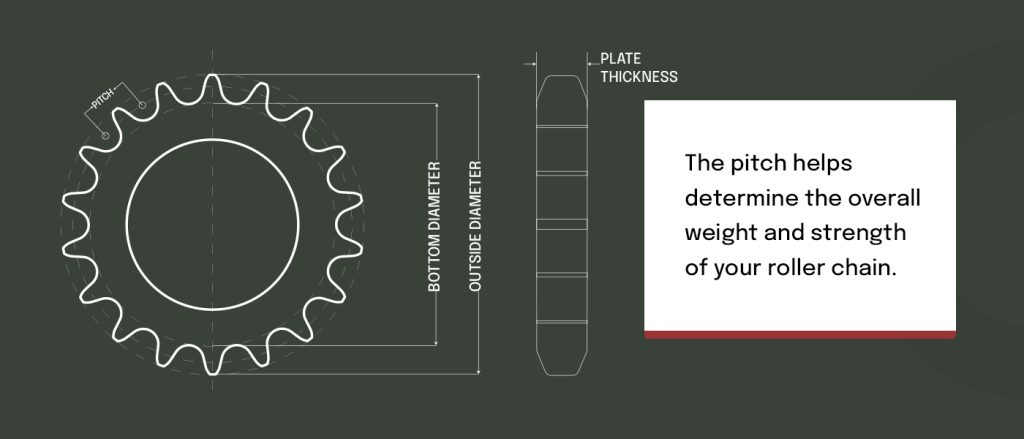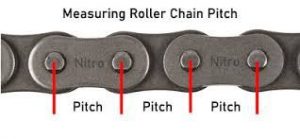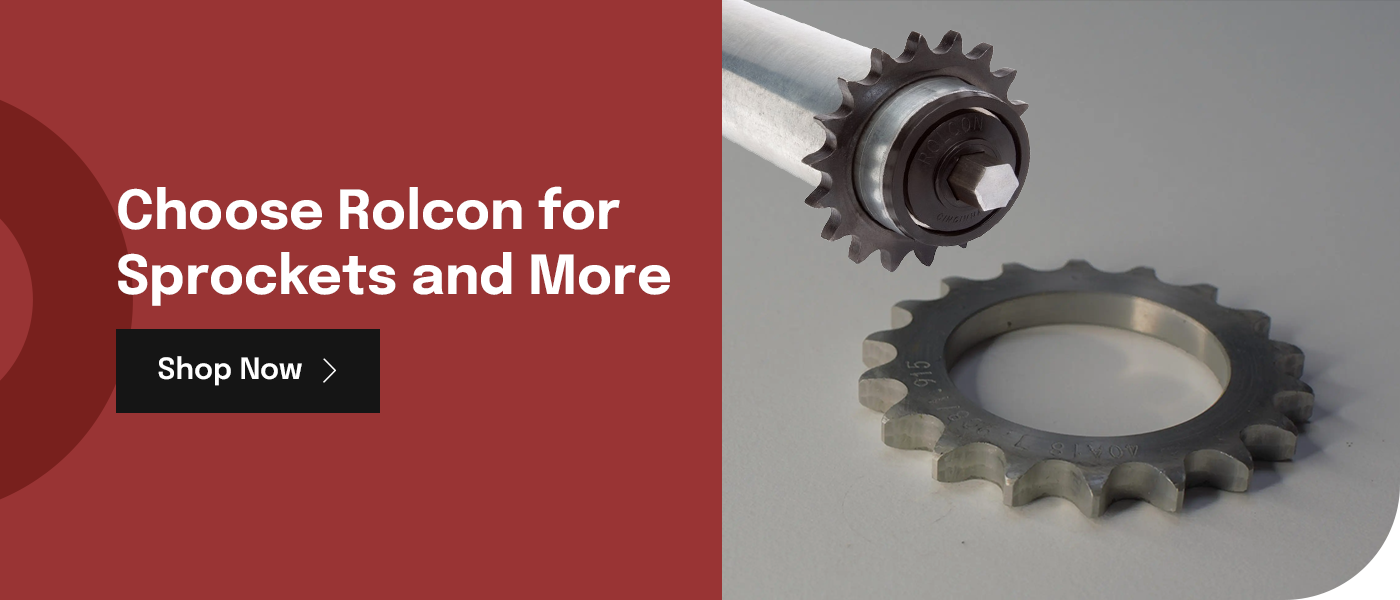
Sprocket-ed rollers are a standard component in pallet conveyors and driven conveyors. When choosing sprockets, they need to match the chain. Several measurements, such as pitch, plate height, and thickness and roller diameter, determine chain size. In the United States, the American National Standard Institute (ANSI) governs all chain sizes.
What Is a Sprocket?
A sprocket is a mechanical wheel with teeth or notches that engage with chain parts. Only chains and sprockets of the same pitch and thickness are compatible. Manufacturers often use steel to make chain sprockets. In some cases, they use aluminum because it is lighter and more ideal for certain applications. However, aluminum does not last as long as steel.
How to Measure Chain Size
When measuring the sprocket chain size, it’s best to use calipers to measure between the teeth. This technique will ensure accuracy in your measurements. Roller chains come in various sizes, thicknesses and number of strands. For that reason, it’s crucial to measure so you get the correct size chain for your sprocket.
Consider the following factors when measuring your chain as they will help determine the chain size you need.
Pitch
The pitch is the measurement from the center of one pin to the center of the next on a chain. ANSI measures chain pitch in 1/8-inch increments. The pitch helps determine the overall weight and strength of your roller chain.

Plate Height
Next, you’ll need to measure the height of the plate. You can either measure the inside or outside of the plate — both should be the same height. If they differ, it may indicate that you have a non-standard chain, in which case you’ll need to notify the manufacturer of both sizes when you place your order.
Plate Thickness
When you measure the thickness of the plate, it’s best to measure both the inside and outside. Some ISO and DIN roller chains have different thicknesses on the outside and inside of the plates. Heavy-duty chains will have thicker sides to increase the strength of the chain without having to go up a chain size.
Roller Chain Pin Diameter
It’s essential to measure the diameter of the pin because some roller chains use non-standard pins. This plays an important role in the chain that you choose.
Roller Diameter
This measurement is the thickness of the cylinder. You’ll need to slide the caliper along the sides of the roller to determine the diameter. Some roller chains actually do not have rollers. When you measure a roller-less chain, use the bushing diameter. Make sure to note that your chain is roller-less when you place your order.
Roller Width
The roller is the width of the cylindrical part that lies between the two plates which the pin goes through. Use the caliper to measure the length of the caliper from both ends to get the width. If you have a roller-less chain, measure the inside width of the inner side plates.
Once you have all of your dimensions, you can use them to determine what size chain you need.
If You Have the Chain and Need the Chain Size
If you have the chain, you’ll often find the size etched on the chain. Below is a list of some of the most common conveyor roller chain sizes.

If you have the chain, the chain size is often stamped into the side of the chain link. The most common chain sizes used in conveyor roller applications are listed in the following size chart table.
Most Common Chain Sizes For Conveyor Rollers
| CHAIN SIZES | PITCH |
| 40 | 0.500” |
| 41 | 0.500” |
| 50 | 0.625″ |
| 60 | 0.750″ |
Choose Rolcon for Sprockets and More
There are a wide variety of chain sprockets to choose from. It’s essential to choose the right design and size to keep your operations going. At Rolcon, we stock various sprockets for different industries. View our range of sprockets online and contact us to get started today.
